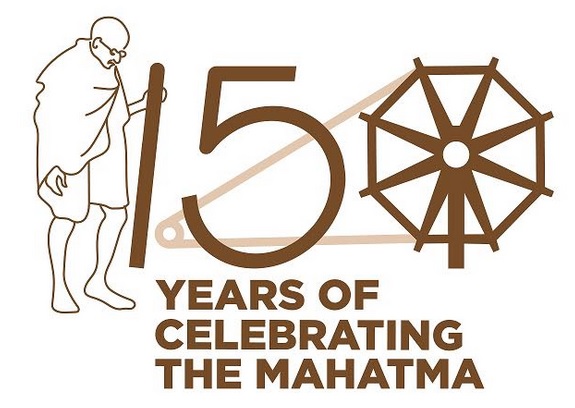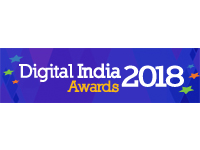Leveraging Mobile Technology for better service delivery and financial inclusion
Venue:Birla Auditorium, Jaipur
Date and Time:February 19, 2010 09:30 Hrs
Panel Members:
- Mr. Sachin Khandelwal, ICICI Bank
- Mr. Rajiv Sehgal, Airtel
- Mr. Sambamurthy, IDRBT
- Mr. S.R. Rao – Additional Secretary, Department of IT
- Mr. C. K. Mathew - Principal Secretary, Finance and Policy Planning, Rajasthan)
The panel has extensively discussed the scope for financial inclusion in India, technological and regulatory aspects, security aspects for leveraging mobile and ICT technologies for financial inclusion. Panelists discussed about the mobile ecosystem – that would encompass not only the banker, service provider and customer but also the community at large, involving governments, regulatory authorities and other parties.
The plenary session was introduced by Mr. Amitabh Nag, - describing the relevance of mobile phone today, proliferation of mobile technology across the country. He remarked that the mobile technology will be used by all citizens in India in the near future, and handed over the session to the moderator, Mr. Sambamurthy.
Mr. Sambamurthy introduced mobile technology and financial inclusion in the context of banking organizations, customers, merchants and stakeholders. He highlighted the following points:
- Banking is currently concentrated in the urban areas. Urban areas have been saturated with bank branches and the majority of customers in these areas do not have time to visit these branches. On the other hand 300 million rural people, across 300 districts in the country have no access to banking, as around 6 lakhs of villages do not have access to bank branches.
- Financial inclusion is part of our social responsibility and must be thought of as a part of public service delivery. Financial inclusion has been incorporated as a policy by RBI. Yet, the no frills account aiming to proliferate the financial inclusion did not yield expected results in India because of lack of last mile connectivity.
- Mobile technology can bring innovation and is a unique channel for service delivery where it not only serves the high tech youngsters but also the poor people in rural areas. In his opinion, there is a lack of collaboration between the banks and the telecom operators. Together, these industries can create a common platform which will transform the rural banking scenario in the shortest possible time. He feels that although regulatory issues are present, banks and telecom operators can create a cooperative model, and bring new dimensions like branchless banking in which mobile technology can play a key role.
- There is a need for creating a common platform to provide value to the entire value chain rather than urban pockets only. All the stakeholders need to work together to create an operative sustainable business model to drive growth and ensure services are available up to the last mile.
Mr. S. R. Rao commented that in spite of recession, India's economic growth has remained high (7.4% in 2009). Yet, sustained economic growth will require inclusive socio-economic growth as well. Government of India has given a high priority to the goal of achieving inclusive society as could be seen from President’s address to Parliament on 4th June 2009. He presented a SWOT analysis on financial inclusion adopting mobile technology.
| Strengths | Weaknesses |
|
|
Opportunities | Threats |
|
|
Mr. Rao also informed that an inter-ministerial group has been formed to develop an eco system with inclusive representation from all stakeholders like banks, telecom companies, and department of post, Department of Information Technology Government of India and Department of Telecommunications. An indicative list of things that would come under the roadmap:
- Types of transaction
- Eligibility of agencies
- Regulatory issues
- Role of Technology provider
- Need for interoperability
- Interfacing with banks
- Security features
An adequate eco system needs to be developed to educate the citizens. The citizens should be able to choose the delivery channel that is convenient to them from the provided multiple delivery channels. Kind of transactions most important for inclusive growth - cash in, cash out, money transfer, which are the basic operations to start with. The list can go longer with additional services and features, which may be added later, such as Loans, Credits etc.
Mr. Rao commented that these basic financial services need to be digitized, leveraging mobile technology. Biometric information, along with UID, Mobile Number and Micro Account number will enable m-finance / m-banking. This will also require certain other things:
- Interoperable Payment Switch
- Virtual Core Banking Entity
- Digital Signature embedded in a chip attached to the SIM card for authentication of each payment
Mr. Sachin Khandelwal started with his remarks on the cost of transactions, and how it drastically falls with the use of ICT. Following are his key comments:
- He mentioned that 50% of the cost comes from salary and infrastructure cost for a bank, which can be eliminated through branchless banking.
- He indicated that prepaid markets provide a great opportunity for scaling up the mobile channel for banking usage.
- In terms of security features for such alternative channels, biometrics can play a key role. ‘Fingerprints at fingertips’ applications can provide secure accessible banking services to both the urban poor and rural rich.
- Reserve Bank of India has recently permitted withdrawal of cash up to Rs.1 000 per day through debit cards issued in India from point of sale (PoS) terminals. While banks welcome this step, one has to understand that the country has only around 45000 ATMs and around 0.5 million PoS, where number of merchants is 12 million. Hence the scope of inclusion still remains large in India.
- He brought into notice the Russian example of mandating all government benefits to go to cash cards of the citizens
- He argued that the mobile phone itself can be converted to a PoS – where people will be able to carry out basic transactions and domestic money transfer using the phone
- Discussing about identity theft he remarked that in India fraud level is less than the South East Asia level.
- Mobile based authentication is currently multi-layered, based on authentication of mobile number, 128 bit encryption, user generated pin.
Rajiv Sehgal opened his arguments demonstrating the key trends in mobile telephony:
- Affordability is increasing
- Usability is going up - people don't know how to read / write but know how to operate a mobile phone
Following are his key remarks in the discussion:
- Mr. Sehgal provided example of m-governance describing how Blackberry has automated and greatly improved the process efficiency for Bangalore Traffic Police and Chennai Tax collectors.
- In the area of microfinance a working prototype is being developed where mobile device is going to be integrated with core banking applications.
- Other small and simple examples of making utility m-services: Phone with a red emergency button will send SOS email / SMS to a list of pre-assigned numbers.
- Answering Mr. Sambamurthy’s question on where and how the collaboration between telecom and banking sector is happening, he said that banks and telecom operators have already made some progress in collaboration. Services like mCheque through which one can pay bills and send money to others would cost nothing to the consumer. Regulatory challenges are primary concerns for the collaborative growth. Yet technologies allow such collaborations and either parties are very receptive. There will be a sea change in 12-18 months.
- Discussing about security issues, he commented that telecom operators attempt to ensure end to end security perspective: data from mobile to server is ensured with highest level of encryption. Data flow / transactions can be encrypted even over the air. SMS / USSD services also have encryption standards.
C K Mathew commented that e-Governance should not be limited in small islands of excellence, rather should be deployed through large Programmes. Following are the key areas he talked about:
- Opportunity within NREGA - 25 lakhs working people under NREGA need bank accounts, but half the accounts are with post offices, and not under any electronic system
- Difficulties with Biometric Details - Although biometric details are taken for the card holders, these details do not conform to UID specifications. There is a daunting task of repeating the whole exercise
- Fund flow from NREGA require a common platform - Cascading of fund flow from large accounts to end customers involve multiple bankers and financial institutions. Currently there are no common standards existing for the whole gamut of bankers, neither are there any standards for interoperability.
- MPFI (Mobile payment forum of India) is being jointly formed by Institute for Development and Research in Banking Technology (IDRBT) and Rural Technology Business Incubator (RTBI) of IIT Madras with a mission to enable mobile payments in India with secure and low cost transaction. MPFI is working on creating such common standards.
DISCUSSION POINTS SUMMARY
- Mobile coverage today has an extremely large user base and has literally broken all barriers to connect to the last mile. A citizen from all strata of society, illiterate or literate, urban or rural, poor or rich, each person has been affected by this technology.
- Currently there are more regulator issues than technological issues to address financial inclusion through mobile technology. There is a need to develop regulations for SMS and USSD based applications which are the main services used by the common man.
- It is heartening to learn about the collaboration between banks and telecom companies. All the stakeholders are currently working together to make a conducive eco system so that both the rich and financially excluded citizens benefit from this technology. We hope to see some improvements in the coming 12-18 months.
- Future pointers:
- Conducive Eco system for development of this channel is needed
- Biometrics can play an important role in enhancing security for mobile based transactions and Identity management.
- Need for development of a common standard to improve interoperability.
- Security of data and transactions is a paramount precondition to make this channel a successful one.
- All mobile based services need to be developed keeping the end user’s perspective in mind, where high end services might not be able to help daily wage workers

















